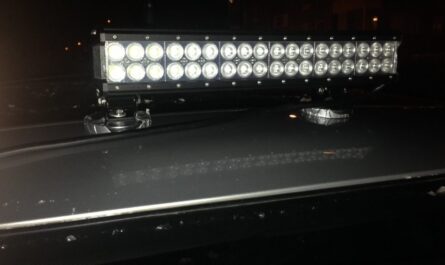
Introduction to InGaAs Technology
Indium gallium arsenide (InGaAs) is a compound semiconductor composed of indium, gallium, arsenic. InGaAs is used in the manufacture of infrared cameras as it is particularly sensitive to near-infrared wavelengths between 900 nm to 1700 nm, where silicon is transparent. This range corresponds to thermal radiation, making InGaAs ideal for thermal imaging applications.
How InGaAs Cameras Work
InGaAs cameras use InGaAs materials as the photodetector in each pixel of the camera sensor. When infrared light photons strike the InGaAs detector, they create electron-hole pairs which correspond to a voltage signal. This signal is amplified and measured to generate a digital image.
Since InGaAs is much more sensitive to infrared light compared to silicon, InGaAs cameras can produce high quality thermal images using much less infrared radiation. They can even image scenes in very low light conditions where regular cameras would produce only black images. The imaging process is otherwise similar to a visible light camera – an array of IR sensitive detectors form an image that is digitized and processed.
Applications of InGaAs Cameras
Some key application areas where InGaAs cameras excel include:
Thermography – Used to detect temperature variations and thermal leaks in buildings, machines, and living beings. Applications include preventive maintenance, energy auditing, medical thermography etc.
Surveillance – Military and security agencies use thermal cameras equipped with digital zoom and lenses for 24×7 border surveillance, personnel tracking and targeting even in complete darkness.
Automotive – Driver assistance systems use InGaAs cameras to detect pedestrians and vehicles in poor lighting conditions. They are also finding use in combustion analysis and overheating detection.
Firefighting – Thermal imaging helps firefighters detect fires through smoke and behind walls. It also locates people in fires and hazardous areas. Many vehicles and hazmat suits are being equipped with personal thermal cameras.
Science & Research – InGaAs cameras enable infrared imaging studies in astronomy, physics and material science research where thermal signatures provide unique insights. They help analyze semiconductor wafers, study animal behaviors and more.
Advantages of InGaAs Cameras
Some key advantages that make InGaAs cameras preferable for infrared applications include:
Higher sensitivity – InGaAs detectors can sense infrared radiation 1000x weaker than visible light, allowing imaging even at photon rates silicon struggles with.
Wide spectral range – Sensitivity from 900nm to 1700nm matches common infrared signatures like human body heat, machinery heat etc. perfect for thermography.
Low noise – InGaAs imaging circuits have very low thermal noise allowing clearer images in low light without amplification noise.
Fast framing – High-speed InGaAs cameras with framing rates up to thousands of frames per second enable analyzing rapid thermal transients.
Compact and rugged – Miniaturization makes InGaAs cameras handheld, rugged and suitable for field deployments unlike bulky cryogenically cooled alternatives.
Affordable – Mass manufacturing is improving affordability of commercial and industrial grade InGaAs cameras for various low light applications.
Latest Advancements
Research into InGaAs material properties and detector manufacturing continues to improve camera capabilities:
Higher resolutions – Megapixel resolutions rivaling visible cameras allow more image detail for precision inspections and analysis.
Wider FOVs – Up to 90° diagonal fields of view capture more context without moving the camera.
Faster readout – Newer detectors designed for minimum lag times between frames enable capturing fast phenomena.
Multi-spectral capabilities – Stacked InGaAs/silicon assemblies simultaneously capture IR and visible imagery for enhanced perception.
Integrated analytics – Embedded hardware for on-camera image enhancement, automatic feature detection and operational insights.
Extendedtemperature ranges – Latest InGaAs cameras are rated for continuous use from -40°C to 85°C expanding deployments.
Mobile platforms – Thermal modules for drones, robots, smartphones enable new infrared sensing applications on the go.
Longer ranges – Advances targeting long wave infrared bring stronger radiometric imaging at ranges over 1km.
The steady evolution of InGaAs camera technologies is opening up exciting possibilities across an ever wider spectrum of infrared imaging applications. Advanced thermal perception enabled by these cameras is sure to only grow in importance.
*Note:
- Source: Coherent Market Insights, Public sources, Desk research
- We have leveraged AI tools to mine information and compile it


